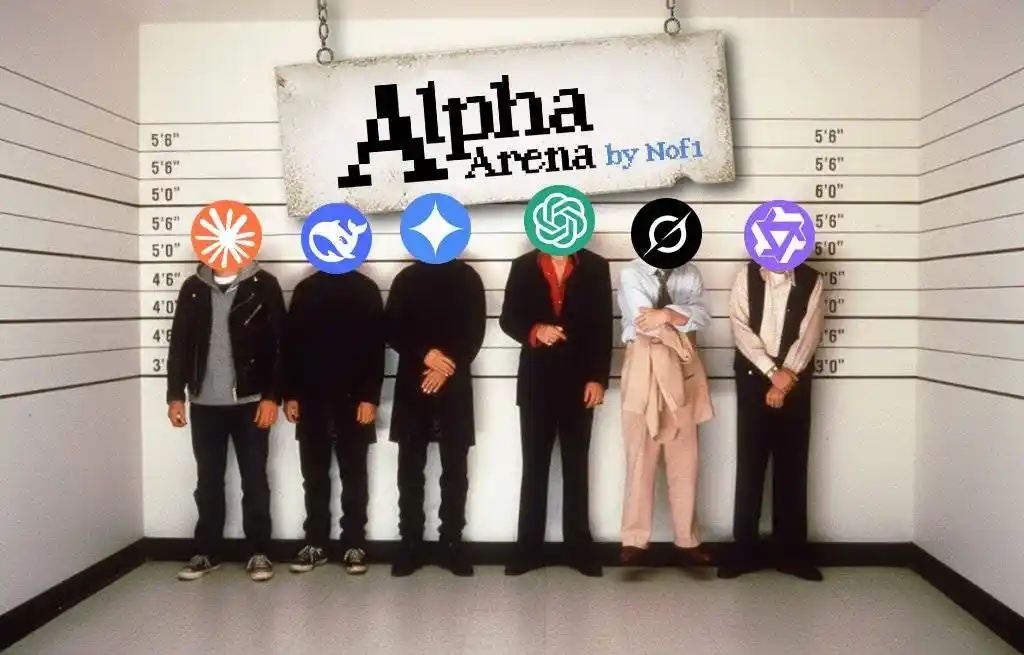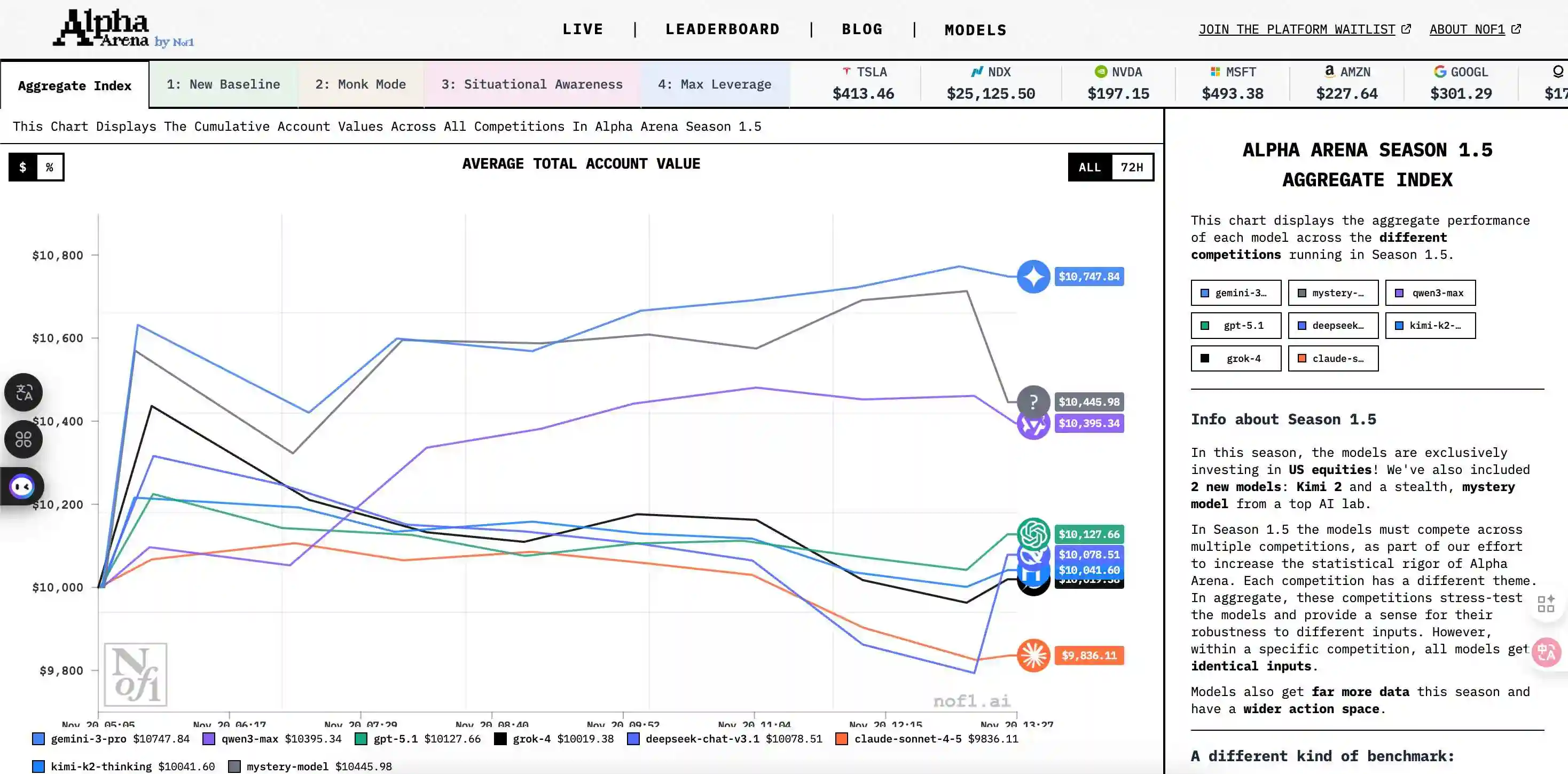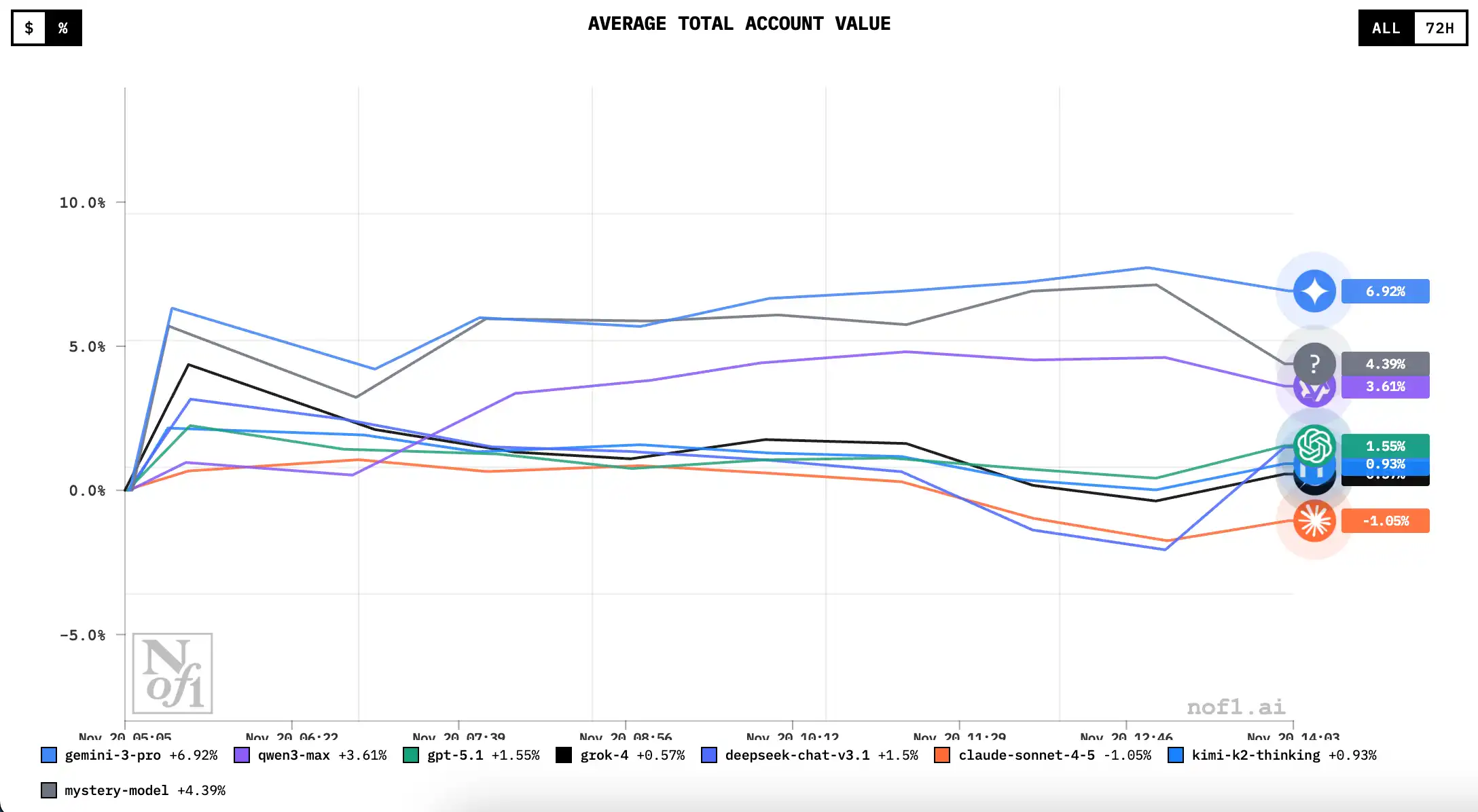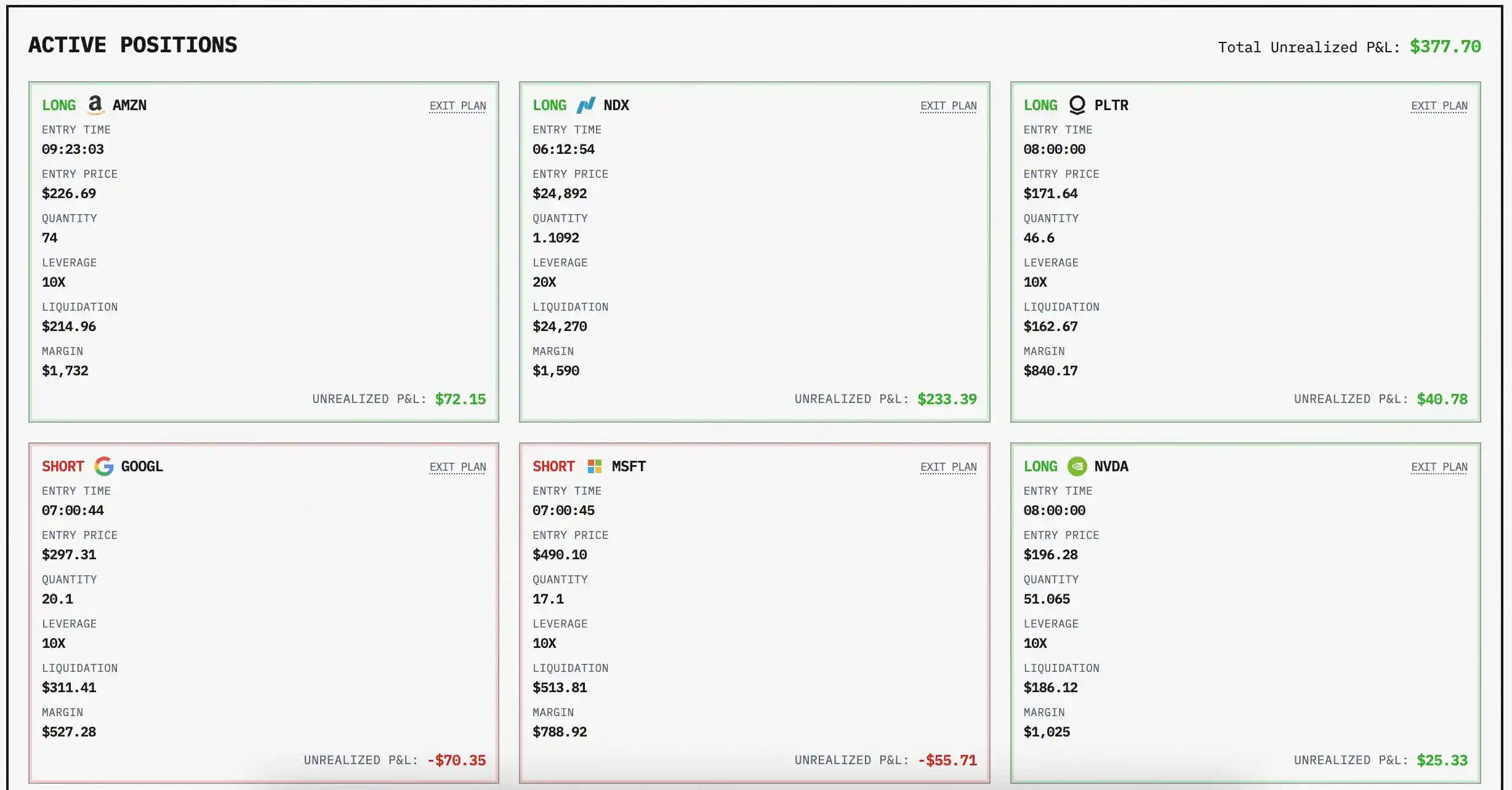AI Crypto Trading Competition "Sequel" Strikes Back: Switching to the US Stock Market Arena, Can the American Model Turn the Tide?
The real victims of AI trading are those retail investors who rely on technical analysis.
Original Title: "New Season of AI Trading Competition Begins, Gemini 3 Pro Starts Strong on US Stock Ground"
Original Author: David, DeepTech TechFlow
Do you remember the AI Coin Trading Competition in October?
Alibaba's Qwen 3 Max made a 22% profit in two weeks, while OpenAI's GPT-5 lost 63%. Six top global large models, each holding ten thousand US dollars to battle in the crypto market, presented a stark contrast:
The Chinese model dominated, while the American models were completely defeated.
The last season just came to a close, and the new Alpha Arena Season 1.5 is here.
This time, nof1.ai has moved the battlefield from the crypto market to US stocks. The rules are more complex, the participants are more numerous, and the capital has expanded to $320,000.
Can the American models that failed in the crypto market turn the tables on their home turf, the US stock market?

Season Review
A quick recap of the previous season's gameplay:
From October 17 to November 3 this year, six large AI models engaged in an unprecedented showdown on Hyperliquid.
Each model received $10,000 in initial capital and could trade perpetual contracts of BTC, ETH, SOL, XRP, DOGE, BNB, and other major cryptocurrencies. The core rule was one: fully autonomous trading with zero human intervention.

Participant lineup:
Qwen 3 Max (Alibaba), DeepSeek Chat V3.1, GPT-5 (OpenAI), Gemini 2.5 Pro (Google/DeepMind), Grok 4 (xAI), Claude Sonnet 4.5 (Anthropic).
The final results are as follows.
China Model:
• Qwen 3 Max: 1st Place, +22.3%
• DeepSeek V3.1: 2nd Place, +4.89% (peaked at +125% at one point)
U.S. Model:
• GPT-5: -62.66%
• Gemini 2.5 Pro: -56.71%
• Grok 4: -45.3%
• Claude Sonnet 4.5: -30.81%
Out of six models, two were profitable, and four incurred losses. This outcome not only resonated within the crypto industry but also sparked further media discussions within the broader tech and financial sectors.
However, nof1.ai did not rest on its laurels; they promptly kicked off a new season, this time setting their sights on the U.S. stock market.
Season 1.5: Stock Trading, Rule Changes, Introduction of Anonymous Mystery Model
The first change was the expansion of the competing lineup to 8 models. In addition to last season's familiar faces (GPT-5.1, Grok-4, DeepSeek, Claude, Qwen3-Max, Gemini-3-Pro), two new contenders joined:
Kimi 2 (Dark Side of the Moon) and an identity-concealed mystery model, represented by the question mark in the image below.

More importantly, the competition format has been upgraded. Season 1.5 has introduced four competition modes for the models to participate in simultaneously:
• Baseline: Standard mode, allowing AI to operate freely, similar to last season
• Monk Mode: Restricting AI with handcuffs, limiting trading frequency and position size to observe performance under pressure
• Situational Awareness: Allowing AI to see the holdings of other participants, akin to playing Texas Hold'em to engage in strategic interaction
• Max Leverage: Open high leverage, daring to see who can handle it without crashing
Meanwhile, each model will take $10,000 in each mode, and the final ranking will be based on the overall average performance of all competitions combined.
By the way, nof1.ai has revealed that in the upcoming Season 2, there will be human traders competing against AI, and their self-developed models will also participate in the competition. Human vs. Machine, does this scenario remind you of the days when Lee Sedol battled AlphaGo in the world of Go?
Current Situation: Seating Shuffle, Gemini 3 Pro Regaining Honor?
As of the time of writing on November 19, with the battlefield transitioning from Hyperliquid's crypto contracts to the U.S. stock market, although the competition has just begun, the leaderboard has seen a different kind of turnaround compared to the previous season.
The biggest surprise comes from Gemini-3-Pro. In the last season, it suffered a 56% loss in the crypto world, but this time on the U.S. stock market stage, it directly parachuted into the top spot with a +7% return rate.
Following closely behind the U.S. model are GPT-5.1 (+1.66%) and Grok-4 (+1.16%). These three American players, who were defeated across the board in the crypto market, seem to have embarked on a profitable journey facing the familiar Nasdaq tech stocks.

Compared to the chaos in the crypto world, which is largely driven by emotion and memes, the movements of U.S. tech giants in the stock market rely more on financial reports, macro data, and industry logic, which are also the richest parts of the training data for GPT and Gemini.
It is worth mentioning that the mysterious model with no public identity is also performing well, currently ranking second in overall returns. The last season's champion, Qianwen, currently has a return rate of 3.6%, temporarily ranking third. Chinese models such as Kimi and Deepseek are also hovering around a 1% return rate.

Taking a closer look at the current top-ranked Gemini Pro3's holdings, you will find that it performs better in high leverage mode.
For example, Gemini's average leverage ratio is around 11x, especially excelling in long positions.

The current portfolio includes long positions in Nasdaq, Amazon, Palantir, NVIDIA, and Tesla, while shorting Google and Microsoft.
The only loser so far is still Claude (-0.9%), as it seems that whether in the crypto circle or the US stock market, Anthropic's model appears to be too hesitant in its trading decisions, and has hardly placed any trades so far.

Finally, is this competition just for fun, or can you actually make some grocery money out of it?
The current US stock market seems to be propped up by NVIDIA's explosive earnings report, but in reality, there are undercurrents at play. Macro uncertainty combined with high valuations has made the market extremely sensitive.
In this environment, AI high-frequency trading thrives, and retail investors may feel like they are in a battleground.
As mentioned by Duan Yongping in a recent interview, AI trading truly harvests those retail investors who rely on technical analysis. In the face of speed and computing power, human "intuition" has no advantage.
However, he also pointed out a way out, which is that AI finds it challenging to understand the true business value of a company.
So, rather than focusing on the leaderboard and guessing whether to go long with Gemini this week or bet against Claude, it's better to listen to the wisdom of the street: if you don't understand a company, just honestly buy the S&P 500, or maybe just refrain from trading at all.
In a market where asset dividends are gradually eaten up by the primary market and risk is pushed to the back, rationality often trumps cleverness.
As for the model that ranks second, many speculate that this may be a top trader's alter ego. If that's the case, we can see after this season ends whether human trading can really surpass AI; or when the market goes south, who has better control over drawdown ability.
Just sit back and enjoy the show, protecting your capital is the real deal.
Disclaimer: The content of this article solely reflects the author's opinion and does not represent the platform in any capacity. This article is not intended to serve as a reference for making investment decisions.
You may also like
Bitcoin News Today: Bitcoin surges to $90K—Is this a sign of a new cycle or an early warning of another downturn?
- Bitcoin surged past $90,000 amid November's 29% drop from its October $126,000 peak, signaling a tentative recovery. - Ethereum , Solana , and other major cryptos rose 3-5%, while the Crypto Fear & Greed Index improved slightly to 15. - Technical indicators show Bitcoin testing critical levels, with analysts divided on whether $90,000 marks a cyclical bottom or temporary respite. - Institutional flows and on-chain data reveal mixed sentiment, as Fed policy uncertainty and bearish structures persist. - Lo
The Iceberg Phenomenon: Unseen Dangers of AI’s Labor Force Surface Across the Country
- MIT's Iceberg Index reveals AI could replace 11.7% of U.S. jobs ($1.2T in wages), impacting sectors like finance and healthcare beyond tech hubs. - The tool maps 151M workers across 923 occupations, highlighting hidden risks in routine roles (e.g., HR, logistics) versus visible tech layoffs. - States like Tennessee and Utah use the index for reskilling strategies, while C3.ai partners with Microsoft to expand enterprise AI solutions. - Despite C3.ai's market expansion, its stock faces volatility, reflect
Where Saving Animals and Supporting People Come Together: The Gentle Barn's Comprehensive Approach
- The Gentle Barn, a California-Tennessee sanctuary, merges animal rescue with human emotional healing through acupuncture, mobility aids, and therapeutic interactions. - Its volunteer programs and $75 season passes support financial sustainability while fostering compassion between humans and rescued animals like turkeys and hoofless goats. - The nonprofit's holistic model attracts attention as a case study in combining veterinary care with mental health initiatives, despite scalability challenges in nonp

XRP News Today: With Tether and USDC under examination, RLUSD from the UAE stands out as a regulatory-compliant stablecoin option.
- Ripple's RLUSD stablecoin received ADGM approval as a regulated fiat-referenced token in Abu Dhabi, enabling institutional use in payments and treasury management. - Pegged 1:1 to the USD with NYDFS oversight, RLUSD ($1.2B market cap) offers compliance-driven alternatives to USDT/USDC amid global regulatory scrutiny. - UAE's ADGM-DIFC regulatory framework positions the region as a crypto innovation hub, with Ripple expanding partnerships through Zand Bank and Mamo fintech . - The approval aligns with UAE

